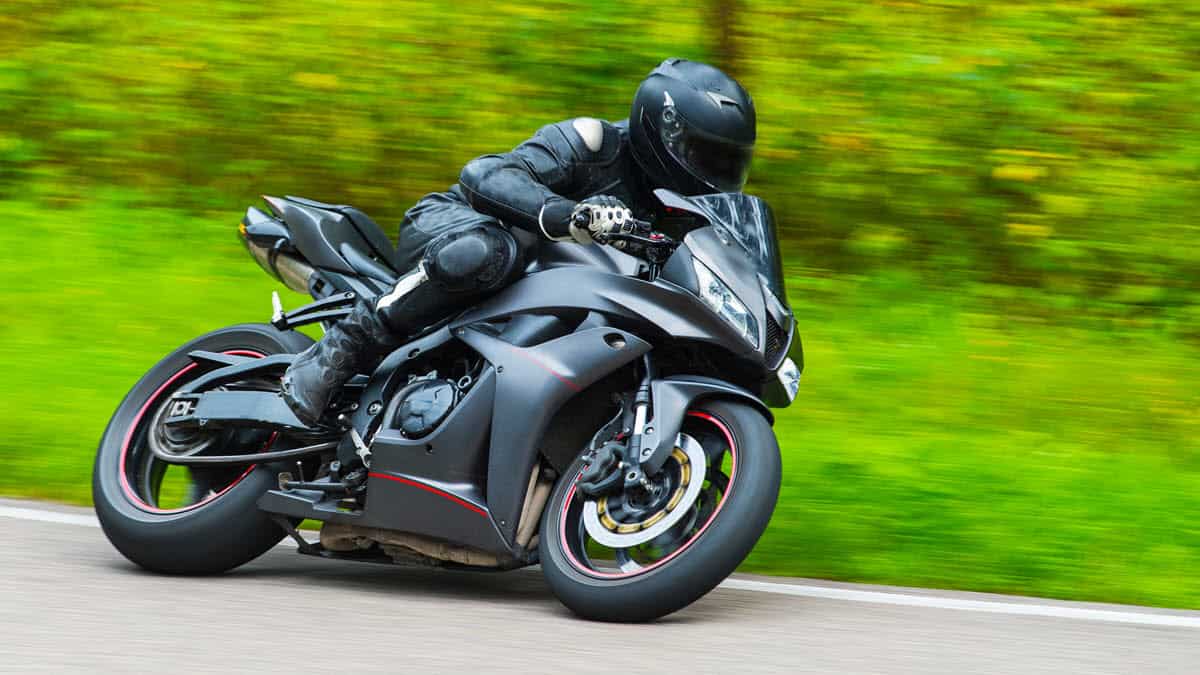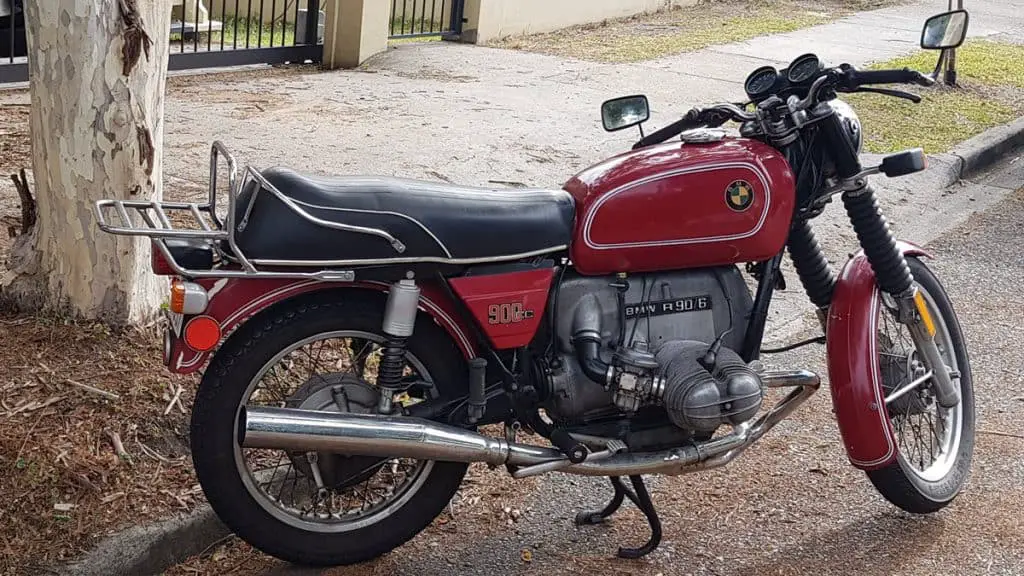Does Speed Rating on Tires Matter?
Modest engined motorcycles can reach three-figure speeds and the only things keeping your bike on the road are two bands of rubber.
Does speed rating on tires matter? Believe me, they do. Read on to find out why.
Tires have a tough life, and for the most part, as long as they hold air, we often take them for granted. Big mistake because the ability to accelerate, brake, and corner rest firmly on those two black rubber hoops.
All tires have a manufacturer’s speed rating. This guarantees that the tire will perform safely at the stated speed. You must of course correctly maintain your tires in line with your motorcycle’s manufacturer guidelines.
Load and Speed Go Hand in Hand
Your tire’s load and speed rating go hand in hand. An owner’s manual will have information on safe weight loads for both solo and pillion riding.
Motorcycle manufacturers provide these specs directly to the tire makers. The result is an OEM tire with a speed rating specific to your model of bike and relating to its performance and safe load capacity.

Ratings are not an open invitation for you to speed! As well as keeping within any speed limits, riders need to make sure that tires are in good condition, and not overloaded.
There are some circumstances where speed ratings become void but more on that subject later.
Brief History of the Hoop
Go back far enough in time and you will discover that tires were once an inch wide and solid in construction. What’s more, they had no tread. That’s excellent news as far as punctures go, but it sure added to an already bumpy ride.
The major breakthrough came in 1888 with John Dunlop’s invention of the pneumatic tire.
One of the most important milestones for motorcycle tires in relation to speed rating arrived in 1983 with the Pirelli MP7 Radial. So let’s take a look at why this is so important.
The secret to radial tires is in their construction. They have either steel or rayon belts which run perpendicular to the direction of travel. Structuring the tire in this way gives a previously unheard-of degree of grip, along with more flexible sidewalls.
Better yet, radial tires run cooler, give greater rider feedback, and are lighter than bias-ply tires, which equates to more speed.
Radials aren’t the only show on the road though and bias or cross-ply tires are fitted on a surprising number of new bikes.
Although bias-ply tires generate a lot more heat and have a lower speed rating, they last a lot longer thanks to their robust construction. More information on the best motorcycle tires can be found here.
What Is A Tire Speed Rating?

Speed ratings are arranged in alphabetical order and each letter relates to a safe maximum speed.
Back in 1960’s Europe, when the system was first introduced, testing boffins decided that the world needed only three classifications; S, H, and V.
For reasons best known to them, those early European testers gave H-rated tires a higher speed rating than S-rated tires.
With vehicles getting faster, ratings expanded to take in the full alphabet. To prove lab technicians also have a sense of humor, the H speed rating sits on the chart between U and V!
How to Read the Tire Speed Rating: What speed does each symbol mean?
| Speed rating symbol | Speed in MPH |
|---|---|
| J | 62 |
| K | 68 |
| L | 75 |
| M | 81 |
| N | 87 |
| P | 93 |
| Q | 99 |
| R | 106 |
| S | 112 |
| T | 118 |
| U | 124 |
| H | 130 |
| V | 149 |
| W | 168 |
| Y | 186 |
| (Y) | 186+ |
You may also notice that the speed rating appears to increase in odd increments. For example, J = 62mph, N = 87mph, and T = 118mph.
The reason for this makes a lot more sense than the H anomaly and down to the tests taking place in Europe which means they are in KPH. Converting them to MPH gives the strangely specific looking speed ratings e.g. J = 100kph – 62MPH.
Are Speed Ratings Tested?
Lucky Strike cigarettes were once marketed to women as an aid to help prevent weight gain and ever since manufacturers’ claims are scientifically tested. The same goes for tires too.
Organizations such as the Economic Commission for Europe (ECE) check manufacture speed rating claims. Alternatively, for anyone manufacture wanting a real seal of approval, it’s the task of the Society of Automotive Engineers (SAE).
Tires intended for sale in the US also must be Department of Transport (DOT) tested.
Tire testing rigs are utilitarian-looking pieces of kit. They consist of a tire and wheel bolted to an assembly platform that can be moved with precision at a set pressure along a track.
The tire comes into contact with a huge rotating steel drum whose speed is calibrated. The force of the tire pushing against the drum simulates the weight of a fully loaded bike.
Starting at 40KPH below the speed rating, velocity is gradually increased to reach the required level before it is held at that speed for a set time.
The tires are then thoroughly examined for wear, data checked against the manufacturer’s claims, and a set number are tested to the point of failure; in other words, run so fast they fall apart.
Back in the Real World
Speed rating tests take place in a lab under controlled conditions. Tire pressures are correct, recommended loads are dialed in, and operating temperatures are set.

To maintain a benchmark, tests are strictly controlled and testing is uniform. But we all know that in the real world, it’s a different matter. Summer temperatures can go through the roof, your idea of tire maintenance is the occasional kick, or your other half decides to pack the kitchen sink for an upcoming road trip.
For all these reasons, speed ratings are the safe maximum achievable at sustained speeds. The most important factor is your adherence to manufacturer specs in terms of tire pressure, load, age, and tread condition.
Ignore any one of these factors and you’re undermining the tires speed rating. Even if your tire is brand new, pick up a puncture and have it repaired, and the manufacturer’s speed rating becomes void.
Speed ratings aren’t an invitation to speed; they relate to the tire, not the bike. It’s down to you to make sure your tires are maintained correctly.
Frequently Asked Questions
What happens if I go faster than the speed rating indicates?
This will depend on how much faster and for how long. In theory, the faster you go, the more heat you generate. More heat can mean an increase in tire pressure and/or a breakdown in the tire’s carcass, which can cause the tire to blow.
Can I put higher speed-rated tires on my bike?
Yes, you can, but they in most cases cost more. Also, a tire constructed for higher speeds will in all probability give you a firmer ride.
Does a fatter tire mean a higher speed rating?
The monster piece of rubber on the back of Kawasaki’s insane supercharged H2 is a 200/55-17, with a W rating. Meanwhile, Avon’s 330/30-17 cruiser tire is V-rated, so it depends on the application.
If Moto GP bikes can hit over 220mph, can I use race tires on my street bike?
A race tire will only last for around 100 miles so you would need a pit crew following you around! Also, a full-on race tire is slick, meaning no tread, so best leave the race tires for the track.






